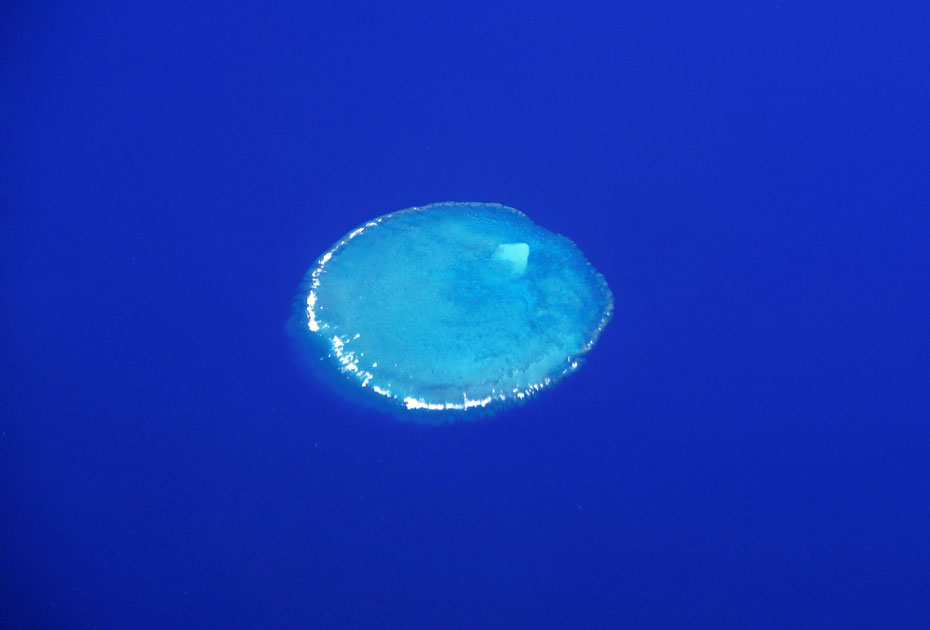
Scientists Warn 1 Million Species are at Risk of Extinction
PARIS – One million animal and plant species are at imminent risk of extinction due to humankind’s relentless pursuit of economic growth, scientists said on Monday in a landmark report on the devastating impact of modern civilization on the natural world. Scientists made an impassioned appeal to governments and businesses worldwide to confront “vested interests” […]

PARIS – One million animal and plant species are at imminent risk of extinction due to humankind’s relentless pursuit of economic growth, scientists said on Monday in a landmark report on the devastating impact of modern civilization on the natural world.

Scientists made an impassioned appeal to governments and businesses worldwide to confront “vested interests” they said were blocking reforms in farming, energy and mining needed to save the Earth’s ecosystems.
“If we want to leave a world for our children and grandchildren that has not been destroyed by human activity, we need to act now,” said Robert Watson, who chaired the study, produced by the Intergovernmental Panel on Biodiversity and Ecosystem Services (IPBES), which groups 130 countries, including the United States, Russia, China and South Africa.
“If we do not act now, many of the million threatened species will become as extinct as the dodo on this tie,” Watson told a news conference in Paris, gesturing to his tie, which bore a design of the flightless bird.
Known as the Global Assessment, the report found that up to one million of Earth’s estimated eight million plant, insect and animal species is at risk of extinction, many within decades.

It identified industrial farming and fishing as major drivers of the crisis, with the current rate of species extinction tens to hundreds of times higher than the average over the last 10 million years.
Climate change caused by burning the coal, oil and gas produced by the fossil fuel industry is exacerbating the losses, the report found.
“We are facing a human extinction crisis,” said Hoda Baraka of 350.org, a climate change campaign group based in the United States. “We must work together to push back against the fossil fuel industry fuelling the climate crisis and for long-lasting and meaningful change.”
INTENSE NEGOTIATIONS
The largest, most comprehensive study ever undertaken of the conjoined fates of human wellbeing and the natural world, the report was finalised in Paris after intense negotiations between IPBES members that concluded at 0300 a.m. on Saturday.
The report represents a cornerstone of an emerging body of research that suggests the world may need to embrace a new “post-growth” form of economics if it is to avert the existential risks posed by the cascading effects of pollution, habitat destruction and climate change.

Compiled over three years and based on 15,000 scientific papers, the report identified a range of risks, from the disappearance of insects vital for pollinating food crops, to the destruction of coral reefs that support fish populations and the loss of medicinal plants.
The threatened list includes more than 40 percent of amphibian species, almost 33 percent of reef-forming corals, sharks and shark relatives, and more than a third of all marine mammals. The picture was less clear for insect species, but a tentative estimate suggests 10 per cent could become extinct.
Publication of the report has coincided with an upsurge in environmental activism by groups including Extinction Rebellion, whose civil disobedience campaign forced the British parliament this month to declare a climate emergency.
The report’s blunt language echoed the United Nations’ Intergovernmental Panel on Climate Change, which said in October that profound economic and social changes would be needed to curb greenhouse gases quickly enough to avert the most devastating consequences of a warming world.
The findings will also add to pressure for countries to agree bold action to protect wildlife at a major conference on biodiversity due to take place in China towards the end of next year, reinforcing a growing recognition among policy-makers that the extinction and climate crises are deeply interconnected.
“We have reconfigured dramatically the life of the planet,” said Eduardo Brondizio, a professor of anthropology at Indiana University in the United States who co-chaired the report.
“The key message: business as usual has to end.”
(Writing by Matthew Green; Editing by Frances Kerry and Gareth Jones)
WATCH 1 Million Species at Risk of Extinction
KEY FINDINGS FROM THE REPORT
- Nature is declining globally at rates unprecedented in human history, leaving a million species now at risk of extinction, some within decades.
- Nature managed by indigenous peoples and local communities is under increasing pressure but generally declining less rapidly than in other lands.
- The average abundance of native species in most major land-based habitats has fallen by at least 20 percent, mostly since 1900, and there has been a 30 percent reduction in global terrestrial habitat integrity caused by habitat loss and deterioration.
- The current rate of global species extinction is tens to hundreds times higher than the average over the last 10 million years, and the rate is accelerating.
- Around 40 percent of amphibian species are threatened with extinction, along with 33 percent of reef forming corals, sharks and shark relatives, and more than 33 per cent of marine mammals.
CLIMATE CHANGE
- The world cannot save the climate without saving biodiversity and vice versa, since the natural systems that sustain life on Earth are intimately interconnected.
- Many of the most promising responses to climate change, such as protecting and restoring forests and wetlands, sustainable agriculture and respecting indigenous knowledge, also protect biodiversity and human wellbeing.
- Using climate scenarios generated by the United Nations’ Intergovernmental Panel on Climate Change, the authors found that 16 per cent of species would be at risk of extinction if the world follows its current trajectory of 4.3 degrees Celsius of warming compared to pre-industrial levels.
- Even if the world manages to limit warming to 1.5 to 2 degrees Celsius, the ranges of most terrestrial species are projected to shrink profoundly.
- Many of the policies that scientists hope could limit temperature rises to 1.5 degrees would also deliver the greatest chance of preserving the most biodiversity possible.
FOOD, AGRICULTURE AND FORESTS

- Land clearing for farming is a key driver of biodiversity loss. The sector is also a major source of greenhouse gas emissions through land clearing, crop production and fertilization – with animal-based foods the biggest contributors.
- 23 percent of land areas have seen a reduction in agricultural productivity due to land degradation, which could be mitigated by a shift toward restorative farming practices and smallholding, which is better for the environment.
- 75 percent of global food crop types rely on animal pollination, yet the loss of pollinators caused by intensive farming is putting $235-577 billion worth of annual global crop output at risk.
- 68 percent of foreign capital invested in the soy and beef sectors, which is driving deforestation in the Amazon, is channeled through tax havens.
- In 2015, an estimated $100 billion of financial support in wealthy OECD countries was used to finance agricultural practices that are potentially harmful to the environment
OCEANS, FISHING AND AQUACULTURE

- Major marine fish stocks are disappearing due to overfishing; 33 percent of such stocks were being harvested at unsustainable levels in 2015.
- Industrial fishing fleets are now roving across 55 per cent of the world’s ocean area, and sustainable practices are taking place on too small a scale to meaningfully address the over-fishing crisis.
- Billions of dollars worth of the annual subsidies awarded to boost the capacity of the world’s fishing fleets may have a negative impact on nature.
- Fish biomass is projected to decrease by 3-25 percent by the end of the century in low and high climate warming scenarios, respectively.
- Pollution from fertilisers has led to the formation of 400 low oxygen ‘dead zones’ in coastal waters covering more than 245,000 square kilometers.
(Reporting by Matthew Green; Editing by Gareth Jones)
